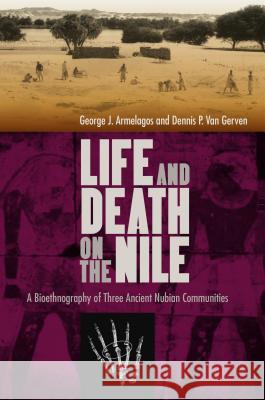Life and Death on the Nile: A Bioethnography of Three Ancient Nubian Communities » książka
Life and Death on the Nile: A Bioethnography of Three Ancient Nubian Communities
ISBN-13: 9780813054452 / Angielski / Twarda / 2017 / 288 str.
"A gem. Armelagos and Van Gerven's research on the skeletal biology of one region of the Nile Valley offers an engaging history of science as told through physical anthropology."--Alan C. Swedlund, coeditor of Plagues and Epidemics: Infected Spaces Past and Present "Captures the essence of the biocultural approach to anthropology and Nubian life in the past."--Margaret A. Judd, University of Pittsburgh "This truly enjoyable book and excellent research is a wonderful example of the collaborative investigations and advanced methodologies that characterize scholarship elucidating the lives of ancient Nubians."--Michele R. Buzon, Purdue University A monumental synthesis of a half century of research, this book investigates human remains from three communities from the ancient Nubian civilization of the Nile River Valley: Meinarti, Kulubnarti, and an unnamed shantytown of underclass laborers. The analyses of these surveys chart the evolution of the field of physical anthropology. During the first archaeological expeditions to Nubia in the early nineteenth century, anthropologists set out to identify the races of Nubian peoples during the rise and fall of their civilization, while the second wave of expeditions to Nubia in the 1930s caused a backlash against this racial determinism. The analyses at Wadi Halfa, part of the third-wave expeditions to Nubia sponsored by UNESCO in the 1960s, helped inspire the "biocultural approach" to human biology now used by anthropologists worldwide. Life and Death on the Nile, the life's work of two highly accomplished anthropologists, exemplifies the very best of this perspective. George Armelagos and Dennis Van Gerven present studies of cranial morphology and evolution in Nubian populations. They look at patterns of physiological stress and disease, as well as growth and development, in infants and children. They study bone fractures and age-related bone loss in adults, and they discuss case studies of diseases such as cancers and congenital defects. Focusing on the link between human biology and the cultural and natural environment, they provide a holistic view of the lives of ancient Nubian peoples.











